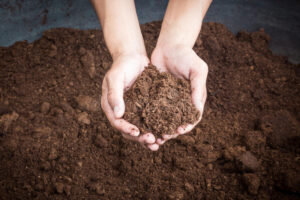All Facts On Peat Moss / Peat Moss Sphagnum

What is Peat moss?
– Dead brown fibrous materials formed from decomposition of mosses and other organic matters in peat bogs or wet lands over thousand of years. This is commonly used by gardeners and farmers as a fertilizers for better growth and development of plants.
Sphagnum Peat moss?
– If the peat moss is produced by the decomposition of dead materials from the sphagnum moss that grow on top of the bog then it is called as Sphagnum peat moss.


Why Peat moss formation is a slow process?
– Formation of peat moss is an anaerobic process (taking place in absence of air) which slows the formation rate. It form less than a millimeter depth each year from which we can analyze the rate of its formation too.
Difference between Peat moss and Cocopeat?
– Peat moss is highly acidic with pH level of 3.3 to 4.0 and thus only suited to acid-favoring plants but pH of cocopeat ranges between 5.2 to 6.8 which is more favorable to wider range of plant species with/out some additives.
– Cocopeat need less water to achieve same level of hydration than peat moss.
– Cocopeat could be washed and reused.
– Cocopeat is ecofriendly as compared to peat moss.
Note: This doesnot mean cocopeat is better option than peat moss rather it depend upon situation. For more information on cocopeat go through this article: https://learnagro.com/all-facts-on-cocopeat-coco-soil-coconut-coir/


Uses of Peat
1. Dry and airy texture absorbs water to an extreme which provides seeds with a better germination in arid regions.
2. Add fluffiness i.e. reduce soil compaction to the soil if used as an soil amendment.
3. Rid of pathogens, bacteria and other harmful agents unlike other soil amendments.
4. More beneficial for acid-loving species like blueberries.
How to Use?
1. Soil Amendment:
– Believe to provide best results when used in the ratio of 2:1 (2 soil per 1 part of peat moss).
– For clay and other heavy soil reduce compactness
– For sandy soil it retains moisture.
– But be aware in changing the pH of soil by using some additives according to the plant necessity before soil amendment as peat moss is acidic.


2. Plant-growing medium (Hydroponics):
– Peat moss is somehow good growing medium for soilless culture but not like a cocopeat.
– But better if used together with other growing media like perlite, vermiculite.
– As Peat moss is an organic matter so it may decompose when it comes in contact with oxygen and nitrogen.
– Other media like perlite balance the moisture and aeration in peat moss, thus making it good plant growing medium.
Environmental Concerns on the Use of Peat moss?
– It takes thousand and end of years to form and the major questions lies in: Should we still use it despite of knowing this facts?
– It is non-renewable source.
– Is it sustainable practices? Obviously not right!
– Large carbon storage (If extracted this will release high amount of carbon).
– Can we tackle global issues of global warming without peatlands protections?
(This concerns has strike us with the issues of finding and moving out on other suitable alternatives; but what is the other alternatives available for us)?
Most Probable Alternatives:
– Compost Consists of decomposed organic materials too but decomposed in presence of air.
– There are some differences but it is the most probable alternatives for now.
– pH neutral and doesn’t hold water as like peat moss.
– For more information on compost: https://learnagro.com/vermi-compost-worm-composting-for-plants-step-wise-guide/
– Using outer husk of coconut as a plant growing medium and for nutrients is the best solution for peat moss.
– Better to use with other matters.
– For more information on cocopeat: https://learnagro.com/all-facts-on-cocopeat-coco-soil-coconut-coir/
I hope all of you have had enjoyed this blog post and hope you get a lots of idea on peat moss and whether is it a good solution or not? Your opinion is also highly appreciated on this. We will be back with new article soon till then enjoy learning and keep reading.



excellent info on moringa plants, where can I purchase seeds to plant it?
The best place is amazon at your location. Try checking some agro stores around you. Let us know for more questions.
A very interesting article. I thought they were part of pilea peperomioids. These nasturtium grow like weeds where I live in southern part of South Africa. The only problems are snails. They are hardy and face drought conditions well. We don’t get frost. I love them xx
Thank you for your comment. I really appreciate it. Please be with us and help us share with your friends and family.
You are so right about choosing well drained soil for planting the grapes. It worked great when we tried.
Thank you for your comment. We appreciate it.